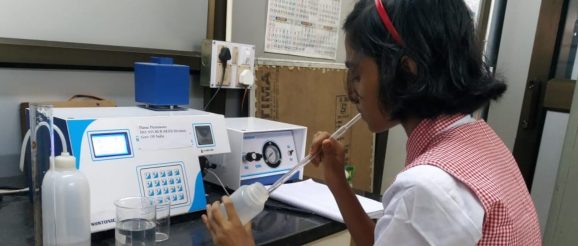How These Teachers Have Fostered Design Thinking, Creativity, and Innovation – Digital Promise

The Ciena Solutions Challenge is a global design challenge inviting middle and high school students to design solutions addressing the Sustainable Development Goals in their community. The program includes a series of professional learning webinars where educators share tips, experiences, and best practices for facilitating the Ciena Solutions Challenge. This blog shares insights from the webinar “Helping Students Design Sustainable and Scalable Solutions.” In today’s evolving world, fostering creativity, design thinking, and innovation in students is more crucial than ever. Educators play a vital role in equipping students with skills they need to thrive. This blog shares reflections from a global panel of teachers on how they cultivate student design and innovation based on their experiences in the Ciena Solutions Challenge. Susmita Roy Chowdury, an educator in West Bengal, India, believes students must engage themselves with the community to better understand who their designs will impact. Susmita shares, “I believe that the experiences my students gained by integrating themselves as a part of the underprivileged community while conducting the village outreach has been significant in helping them realize that scalability of projects aiming to deal with malnutrition and hunger demands more than simple laboratory research.” Encouraging students to immerse themselves in the community helps them develop empathy for community members and motivates students to develop a practical solution. Mahamba Sebastian, an educator in Mwanza, Tanzania, encouraged teachers to consider inviting their students to collaborate and learn with peers in other parts of the world. Mahamba shares, “The method we use in our program is small group discussion where students work collaboratively and they support each other…we also do global collaboration where we invite students from the United States to Tanzania to help students work on their speech and debate presentations using technology.” Both Mahamba and Susmita encourage teachers to create a space where students can tap into their sense of altruism. Susmita shares, “I believe that teachers who educate students on the pressing needs of today give them the scope of emphasizing the value of what they are aspiring to put into the project work. Once students realize the possible magnitude of how their work can affect other people, they will naturally want to do their best.” Mahamba adds “As teachers we need to have empathy and sympathy and be resilient to bring impact and changes. A small metaphor [tied to this statement] is, ‘a spark from a spark to a fire’—[when] working with a community of learners you need to start from a small entity and will slowly bring big changes.”
